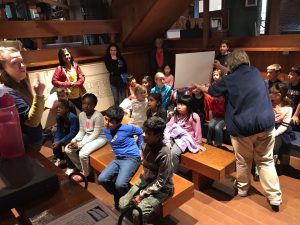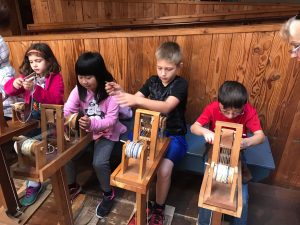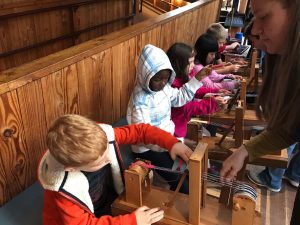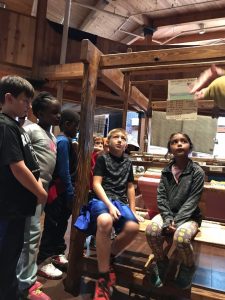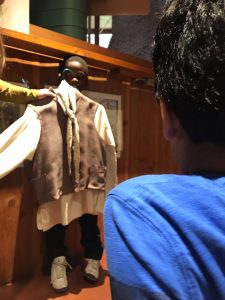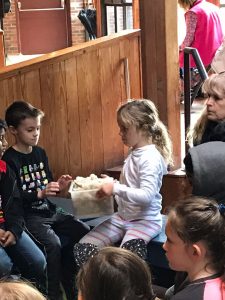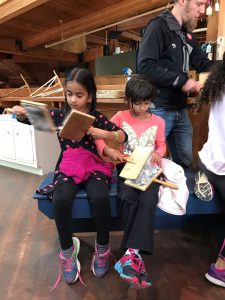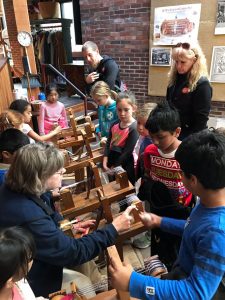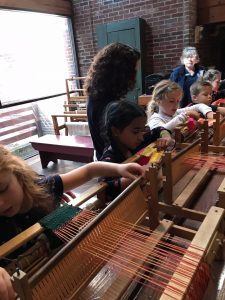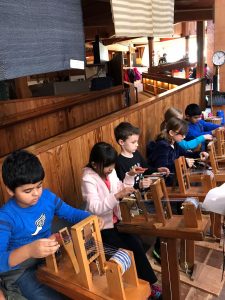Posted by kavery508 | Posted in Uncategorized | Posted on October 16, 2017
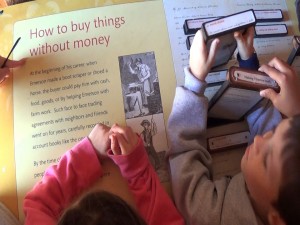 What a great time we had at OSV! Students were highly engaged in hands-on learning during workshops and interactive demonstrations by villagers all day, seeing economics and history in action. A big thanks goes out to our chaperones for their time and care. They kept our kids safe and on track all day!
What a great time we had at OSV! Students were highly engaged in hands-on learning during workshops and interactive demonstrations by villagers all day, seeing economics and history in action. A big thanks goes out to our chaperones for their time and care. They kept our kids safe and on track all day!
 RAZ Kids is ready to go! Reading A to Z, or RAZ, is a website that kids use to read at home and on the go. It is the most authentic means of reading done electronically that I have seen. Please see the note coming home on Monday that provides information on the site. You’ll find your child’s password attached. Students may begin using it Monday night for homework, or just because it’s fun and smart! Our subscription is graciously funded by parents via the PTO. Please take time to help your child log in so they can get started and read often. Note: You can access the site via the link above under Student Resources. If you hover your cursor over the link button, it will show our class code.
RAZ Kids is ready to go! Reading A to Z, or RAZ, is a website that kids use to read at home and on the go. It is the most authentic means of reading done electronically that I have seen. Please see the note coming home on Monday that provides information on the site. You’ll find your child’s password attached. Students may begin using it Monday night for homework, or just because it’s fun and smart! Our subscription is graciously funded by parents via the PTO. Please take time to help your child log in so they can get started and read often. Note: You can access the site via the link above under Student Resources. If you hover your cursor over the link button, it will show our class code.
 At math time this week, students will be learning the fine points of regrouping when subtracting, across the tens and hundreds (think 264-158). They will be working with base ten blocks to model the process and show understanding. They will be showing it another way by drawing base ten pictures (squares for hundreds, etc., like on homework). And they will finally learn to “cross out” the number in the tens and hundreds place to regroup–what we used to call “borrowing”.
At math time this week, students will be learning the fine points of regrouping when subtracting, across the tens and hundreds (think 264-158). They will be working with base ten blocks to model the process and show understanding. They will be showing it another way by drawing base ten pictures (squares for hundreds, etc., like on homework). And they will finally learn to “cross out” the number in the tens and hundreds place to regroup–what we used to call “borrowing”.
The difference between how we learned it years ago and how it’s taught today is that we’re making sure students have a real sense of the numbers involved and what the process of regrouping is really all about. In your homework packet in the center I have included a step by step picture guide so you can help your child at home if they need it (see Chapter 3). Whether they do or not, it’s always wise to ask them questions: How many hundreds/tens/ones are in that number? Will you need to regroup? How do you know? Does your answer make sense? Could you prove it another way?
Students will also be taught to use addition to check subtraction. This means to do the operation in reverse. For example, to check that 213-156=57, students must add 57 + 156 and do the math (e.g. not simply write 57 + 156 = 213). Since addition is always easier for us humans than subtraction, this is an effective means of checking accuracy. On the homework, it asks students to “Show how to check your work with addition.” They should be showing their regrouping when they add as they did all through chapter 2.
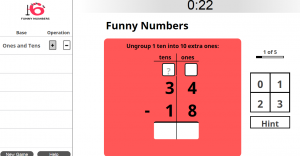 A great way to practice regrouping in the 10s and 1s is to play Funny Numbers at Greg Tang Math. Click on the picture above. Choose “Base 10” , then the operation “-“. Notice in the example above: you can regroup by taking 1 ten away from 3 tens and moving it into the 1s column. 3 tens and 4 ones is the same as 2 tens and 14 ones. Now the problem is easier understood and we’re not just crossing out the “3” and making it a “2”–which is too abstract a concept for most young kids to hold in their heads.
A great way to practice regrouping in the 10s and 1s is to play Funny Numbers at Greg Tang Math. Click on the picture above. Choose “Base 10” , then the operation “-“. Notice in the example above: you can regroup by taking 1 ten away from 3 tens and moving it into the 1s column. 3 tens and 4 ones is the same as 2 tens and 14 ones. Now the problem is easier understood and we’re not just crossing out the “3” and making it a “2”–which is too abstract a concept for most young kids to hold in their heads.
If you’re following along at home with the eBook, this is Chapter 3, lessons 1 & 2.

